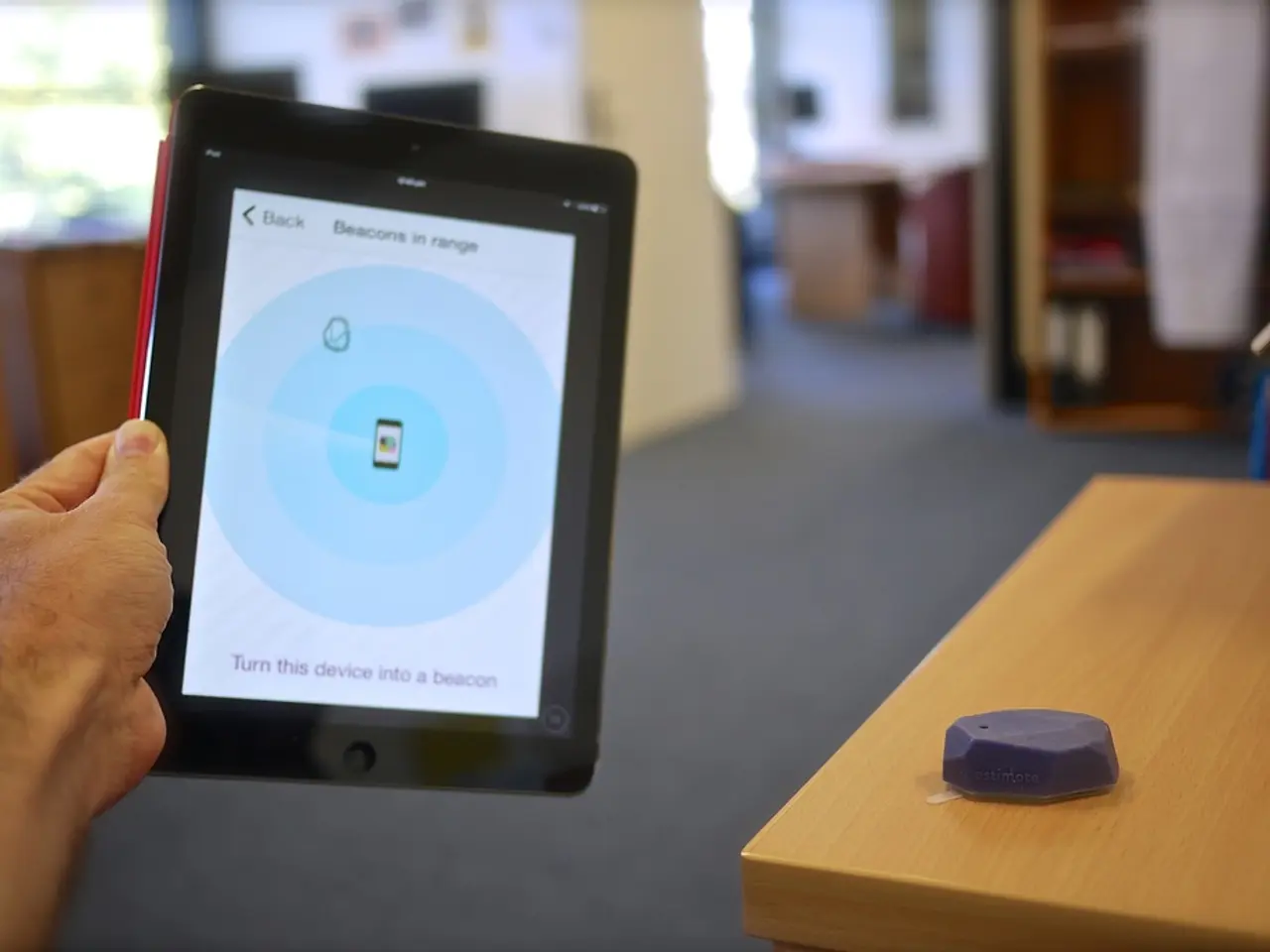The Essence of Augmented Reality and Its Operational Mechanics
In 2025, Augmented Reality (AR) technology is experiencing a significant leap, moving from experimental stages to widespread practical application. The latest advancements include the development of more advanced AR glasses and headsets, integration with 5G networks, Artificial Intelligence (AI), and the Internet of Things (IoT), making AR a foundational technology for the "metaverse" and beyond [1][2][3].
Key trends and future directions include:
- Advanced AR Glasses and Spatial Computing: New AR glasses equipped with spatial computing capabilities are transforming how users blend digital content with the physical world. US tech companies are pioneering lightweight AR headsets aimed at everyday use, enhancing interaction and connectivity [3].
- Integration with AI and IoT: AR combined with AI and IoT enables contextual, personalized experiences such as virtual try-ons in retail, real-time data overlays in industrial environments, and enhanced employee training programs [2][3].
- 5G Connectivity: The expansion of 5G networks supports AR by providing low-latency, high-speed data transmission necessary for real-time, high-fidelity AR experiences [1].
- Commercial and Marketing Applications: AR marketing campaigns in 2025 have demonstrated superior engagement metrics—three times higher brand lift and 70% better memory recall than traditional ads—signaling strong adoption in social and commercial sectors [5].
- Education and Remote Assistance: AR is increasingly used for on-the-job training, remote expert assistance, and immersive educational content, enhancing effectiveness and accessibility [3].
- Software Innovations: Platforms like Apple’s ARKit 5 continue to push AR boundaries by enabling novel user interactions and expanding industry use cases, including design, gaming, and healthcare [4].
Augmented Reality (AR) is not just a passing fad; it has a wide range of applications, including gaming, entertainment, education, healthcare, and manufacturing [6]. AR can be used with a smartphone or tablet, making it a more convenient and portable option. Specialized AR wearables are designed specifically for AR applications and provide users with a hands-free experience [7].
AR is different from virtual reality (VR), which creates a completely artificial environment. Instead, AR technology overlays digital information onto the physical world, enhancing the user's perception of the real world environment [8]. This technology enables users to interact with digital content in real-time using gesture and voice controls [9].
Core technologies used in AR include computer vision, image recognition, and tracking. AR technology uses a combination of hardware and software components, such as a display, camera, sensors, processor, and GPS, to create an interactive and immersive experience [10].
The development of lightweight and portable AR devices, such as smart glasses, will enable users to access AR content on the go [11]. The integration of Artificial Intelligence (AI) and Machine Learning (ML) in AR software will enable more accurate and efficient tracking and recognition of objects in the real world [12].
AR has the potential to transform the way we interact with the world around us, revolutionizing various industries, including retail, entertainment, and tourism [13]. Moreover, AR has the potential to play a significant role in the Metaverse, enabling users to interact with virtual objects in the real world [14].
References:
[1] CNET. (2021). Augmented Reality: The AR glasses you can buy now. https://www.cnet.com/tech/gaming/augmented-reality-the-ar-glasses-you-can-buy-now/
[2] Forbes. (2020). The Future Of Augmented Reality In Retail. https://www.forbes.com/sites/forbesagencycouncil/2020/08/28/the-future-of-augmented-reality-in-retail/?sh=6d7f7e6738c9
[3] VentureBeat. (2021). The AR headset market is getting crowded. Here's why that's a good thing. https://venturebeat.com/2021/05/20/the-ar-headset-market-is-getting-crowded-heres-whys-that-good/
[4] Apple. (2021). ARKit. https://developer.apple.com/arkit/
[5] Digi-Capital. (2020). AR/VR Report Q4 2020. https://digi-capital.com/report/arvr-q4-2020/
[6] AR Insider. (2021). The State of Augmented Reality in 2021. https://www.arinsider.com/2021/03/the-state-of-augmented-reality-in-2021/
[7] Wired. (2020). The Best AR Apps for Your Phone. https://www.wired.com/story/best-augmented-reality-apps/
[8] AR Insider. (2020). AR vs VR: What's the Difference and Which is Better? https://www.arinsider.com/2020/08/ar-vs-vr-whats-the-difference-and-which-is-better/
[9] TechRadar. (2021). Best AR apps for iPhone and Android. https://www.techradar.com/best/ar-apps
[10] AR Insider. (2020). AR Technology: A Primer for Marketers. https://www.arinsider.com/2020/08/ar-technology-a-primer-for-marketers/
[11] CNET. (2021). The best AR headsets for 2021. https://www.cnet.com/tech/gaming/the-best-ar-headsets-for-2021/
[12] VentureBeat. (2020). AR and VR's AI problem: Why the industry is struggling to get it right. https://venturebeat.com/2020/08/07/ar-and-vrs-ai-problem-why-the-industry-is-struggling-to-get-it-right/
[13] Deloitte. (2020). AR and VR: The future of retail. https://www2.deloitte.com/content/dam/Deloitte/us/Documents/about-deloitte/us-consulting-augmented-reality-virtual-reality-retail.pdf
[14] VentureBeat. (2021). The Metaverse: What it is and why it matters. https://venturebeat.com/2021/03/30/the-metaverse-what-it-is-and-why-it-matters/
- As AR technology advances,users will soon have access to lightweight AR glasses equipped with spatial computing capabilities, which will enable them to interact with digital content seamlessly and without being tethered to a phone or tablet.
- With the integration of Artificial Intelligence (AI), Machine Learning (ML), 5G networks, and the Internet of Things (IoT), AR technology is expected to play a pivotal role in shaping the future of immersive experiences in the metaverse, providing users with realistic and engaging virtual environments.




